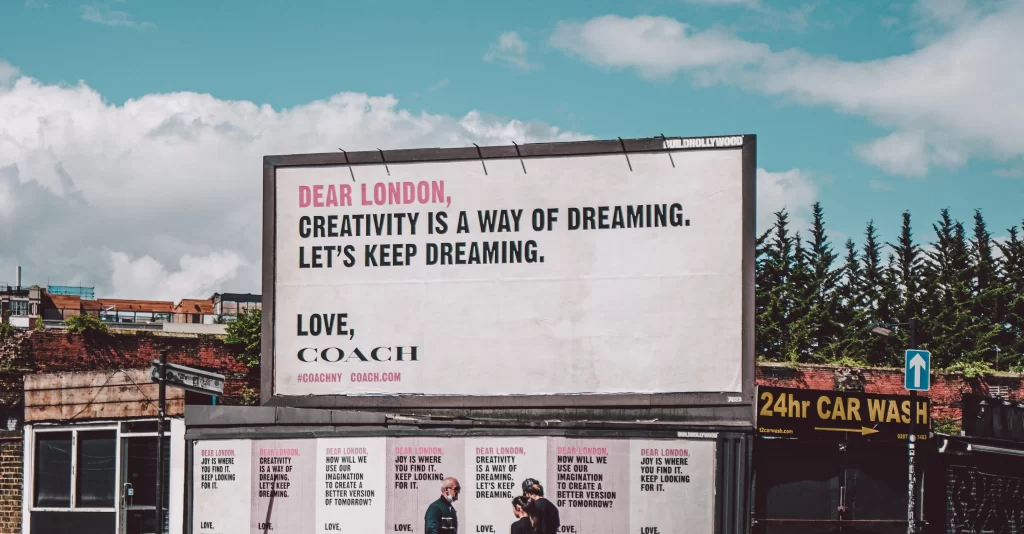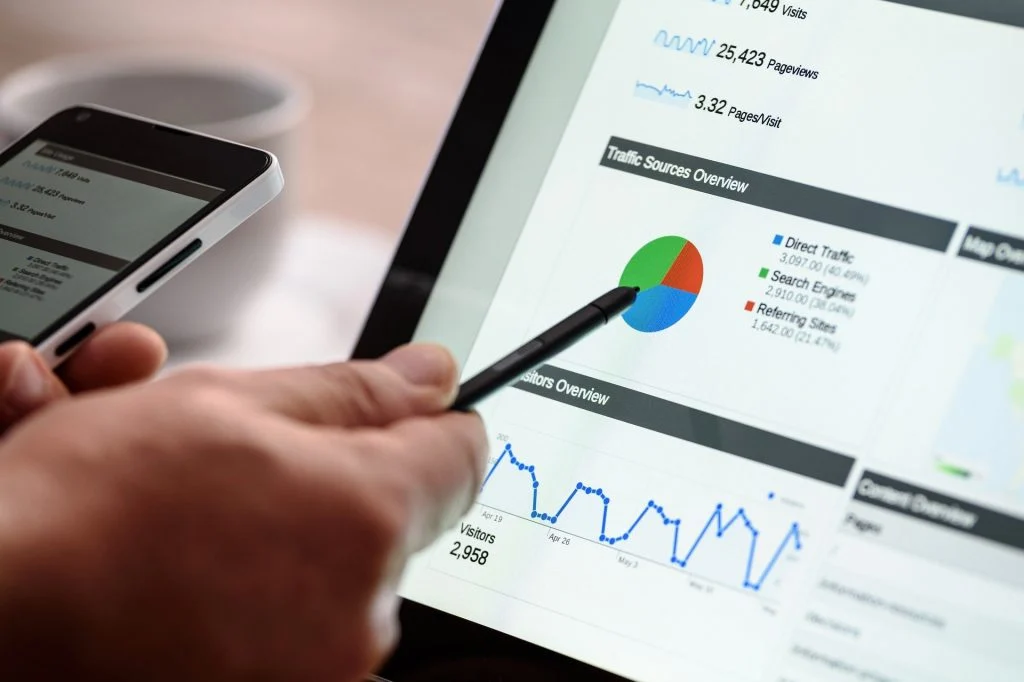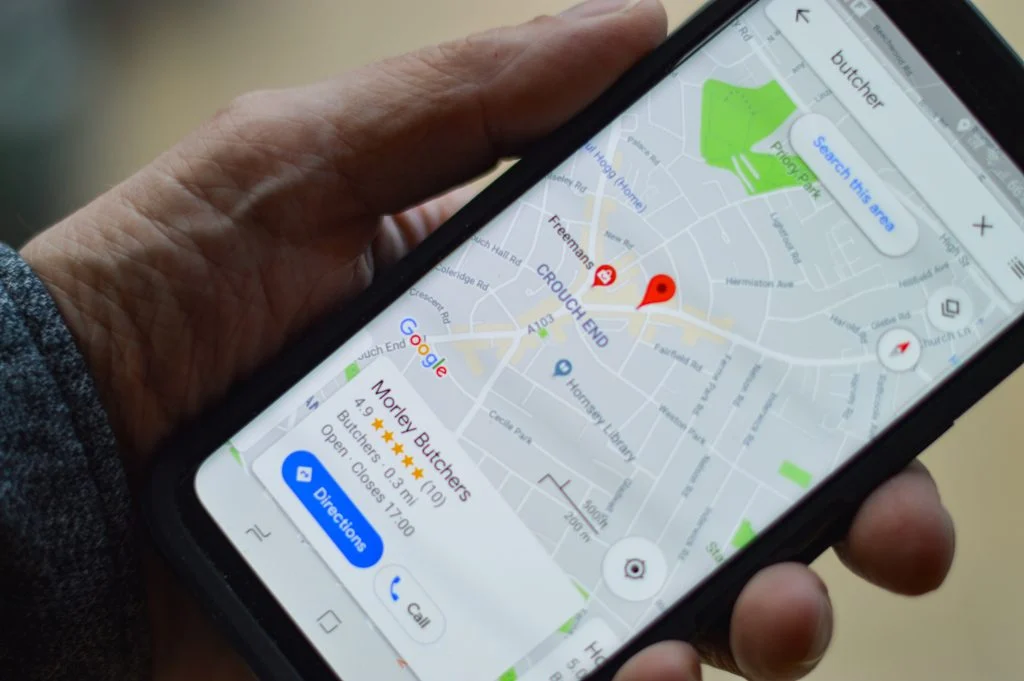
Regardless of being a newcomer or a global enterprise, every business must contemplate initiating a brand recognition initiative.
Carving out your identity in a novel or contested market isn’t straightforward, yet through a robust content marketing approach and apt advertising, it’s possible to amplify brand recognition and establish your brand as a household name among your intended audience.
In this article, we will explore ‘how advertising enhances brand recognition’, detailing the various advertising methodologies at your disposal, strategies for elevating brand recognition within a fresh market, and indicators of a successful campaign.
How does advertising increase brand awareness?

Essentially, advertising plays a pivotal role in enhancing brand awareness by ensuring your brand captures the attention of a wide customer base. Leveraging paid reach or impressions becomes crucial at significant moments, whether you’re scaling your business or integrating it into your seasonal marketing plan.
Advertising proves beneficial in various scenarios, such as:
– Introducing a new brand to the market
– Rolling out a new product or line
– Undergoing a brand makeover
– Penetrating new markets with your brand
– Building brand recognition and awareness for particular causes or events you wish to support
The advantages of employing advertising are extensive:
– It exposes your brand to new potential customers
– It maximizes the effectiveness and reach of your content marketing strategy by enhancing visibility in search engine results
– It fosters connections between your brand and specific consumer requirements
– It establishes links with particular causes, events, and awareness campaigns, especially when combined with public relations (PR) and sponsorships
How is paid traffic different from organic?
Paid traffic refers to visitors who land on your website after clicking on an advertisement. This type of traffic is beneficial for generating leads but may not always serve as a reliable indicator of your content’s appeal and engagement levels.
Advertisements can be a strategic tool used either continuously to compete for specific, highly sought-after keywords or intermittently, depending on your marketing needs. Essentially, ads can complement your ongoing efforts in organic content marketing.
Organic traffic, on the other hand, consists of visitors who find your website either by directly searching for your brand or by clicking through from search engine results pages.
Often, organic traffic is viewed as a more valuable measure of content marketing effectiveness. It indicates whether your content is sufficiently engaging and performing its crucial role in fostering significant connections with its audience.
Raising brand awareness through advertising
As mentioned, advertising definitely has its place in many marketing plans.
There are several kinds of advertising and the right one(s) for you will depend on your product/service, your target audience and your budget.
You may choose one or more of these but you should always choose based on the target audience you want to attract, so make sure you do your research about how they interact with and respond to different media.
For instance, if you’re looking to target a younger demographic, advertising in newspapers probably won’t be as effective as paid ads on their preferred social media platforms.
Let’s explore the most common ways to raise brand awareness below:
How to increase brand awareness offline with advertising
Some of the most common offline or OOH (Out of Home) advertising methods include:
Newspapers and print
Print advertising is one of the most common and traditional types of brand awareness advertising. It can appear in newspapers, magazines, journals, trade books and newsletters and usually features images and text in equal measure.
Pros: It’s useful for reaching a target market and works well if you have strong visuals and catchy taglines. Discarded papers and magazines are often left on transport which can increase visibility.
Cons: It can be much more expensive because of the costs and overheads involved in the print industry. Readership continues to fall in favour of digital content.
TV and radio
Television and radio ads are traditional forms of advertising that can allow you to grab attention with creative jingles and videos that communicate your brand.
Pros: More opportunity for creativity. They can be used to promote products to larger audiences. Can be localised if you choose to use a local station or TV channel.
Cons: Can be very expensive, particularly for prime-time slots on national channels. A catch-all medium; not easily targeted.
Street-level ads
Billboards, street-level and public transport advertising in high-traffic areas are impactful and can help you gain attention in a particular area. These come in different sizes which means they can be tailored to your budget. However, the greater your budget, the wider your reach will be.
Pros: Attention-grabbing making it great for commuter areas. If the space isn’t in demand, you could see your ad stay up for longer without having to pay.
Cons: Can be very expensive depending on the space and size. This kind of advertising can’t easily be rectified if you spot a mistake or need to pull an advert for any reason. Costs of materials and labour will be factored in.
Direct mail
Direct mail is a good way to target individuals as you may be able to send this advertising directly to their home or business address depending on the permissions you have to use a customer’s data. The best direct mail provides something of value besides just being an advert, such as a newsletter or money off.
Pros: Allows you to get into your audience’s home. Can allow for more value and personalisation.
Cons: Only really works when you already have customer details in your sales funnel, otherwise you are at risk of spamming. Postage and printing costs can be high.
How to increase brand awareness online with advertising
Some of the most common online advertising types include:

Video ads
Video marketing is a great way to create brand awareness, with YouTube being the second-largest search engine and other platforms like TikTok and Instagram capitalising on the demand for video. With the rise in video marketing, these can easily be shared across channels and repurposed on your website and other marketing materials.
Pros: Easily shared and can be repurposed making it cost-effective.
Cons: Requires someone skilled in video production and content writing to produce a quality video that gets clicks. Your ad could be silenced or skipped by restless viewers.
Social media ads
Social media advertising is a good strategy for those with smaller budgets. Many social media platforms such as Facebook and Twitter have the ability to create ads that are highly targeted to the type of audience you want to attract.
Pros: Can easily be managed from your social media account. Set budgets, target specific audiences and see the number of impressions and engagements you’ve made.
Cons: Audiences are increasingly becoming aware of social advertising and may scroll past your ads.
Banner ads
Banners ads are another staple of any marketing strategy. These are the kinds of ads you see at the top of third-party web pages and are usually arranged via a digital ad agency that can guarantee a number of impressions.
Pros: These can be targeted and placed depending on your audience demographic, such as food brands advertised on recipe sites.
Cons: Graphic design skills are required to create an engaging and well-rendered ad. More expensive than some forms of digital advertising. Many web users are used to ignoring these.
PPC & search ads
Search ads are a common sight in Google and Bing search results. There are several types including PPC (pay per click) which require you to bid for keywords, and pay per lead, such as Local Services Ads which allow you to get featured for offering a specific service in a certain location/catchment area. They are by far one of the more popular types of online advertising and can be easily managed.
Pros: Easy to set up and manage, even for small business owners. Set a budget and bid for keywords. Doesn’t necessarily require special graphics or content writing skills.
Cons: Some highly competitive keywords can be expensive which means you might have to do some keyword research to find alternatives. Due to fears over online safety, some users instinctively prefer to click organic (rather than paid-for) links as these positions have been achieved over time rather than being bought.
This list is not exhaustive. As we mentioned, the opportunities for advertising are expanding all the time, so activities like native advertising and syndicated content are also subtle ways to blend advertising into your content marketing strategy.
How to create brand awareness in a new market
Creating brand awareness in a new market can be a daunting task for SMEs. Here are some tips to help:
1. Study the market and define your target audience
It’s important to understand the market you want to enter and your target audience in order to effectively create a brand that resonates. Research your competitors, what you can bring and the risks and opportunities of the market, as well as the demographics, interests and behaviours of your audience to tailor your advertising efforts to them.
2. Brainstorm advertising campaigns
Depending on your target audience, one of the best ways to penetrate a new market is by using various channels of online and offline advertising, such as billboards, posters and TV/radio ads. Creative advertising can help drum up anticipation and curiosity about your brand, helping you reach a wider audience and increase brand visibility in a shorter period of time.
3. Consider a content marketing plan
A content marketing strategy can help you build on the curiosity generated by your advertising campaign and begin to build a profile online. Develop content that meets the needs and interests of your target audience with a mix of content types such as press releases, blog posts, social media updates, videos, lead magnets such as ebooks or free trials and infographics.
Read More: How to put together an editorial content calendar for content marketing
4. Track your results
Use content marketing and advertising analytics to track the performance of your campaigns and adjust your strategy as needed to optimise your results. Other metrics to monitor include the number of referrals, sales revenue, number of new customers, customer feedback, press attention and online reviews.
5. Partner with influencers
Influencer marketing can be a great way to reach a ready-made audience that aligns with your target customer base. Find influencers who align with your brand and collaborate with them to promote your products or services.
6. Attend industry events
Attending industry events is a great way to make connections and get your brand in front of potential customers. Consider sponsoring an event or setting up a booth to showcase your brand.
Remember, creating brand awareness takes time and consistent effort. Be patient and stay committed to your strategy.
How do you know when your brand awareness campaign is working?

Regardless of the type of advertising you use in your brand awareness campaign, you need to track certain metrics like impressions, clicks, enquiries, sales and cost per click. These will help you know whether your advertising is making an impact.
Here are some metrics to check:
Impressions: If your goal is to reach a wide audience, impressions are the number of times your advertisement has been seen. From here you can deep-dive into the number of clicks or engagements to understand the impact your ad had.
Website traffic & CTR: Traffic can indicate awareness and desire to learn more after absorbing your key message. You can also track where these sources came from so you know which were your strongest ads.
Social engagement: If you have strong social media channels, measuring engagement with your content can be a good way to tell how successful your ads are. If people like what they see on Facebook or retweet it on Twitter, for example, then that’s an indication of their interest in your product. You can find out which influencers, campaigns and types of content are driving the most interaction and whether this dead-ends or helps increase follower numbers.
Search data: Use the number of monthly searches around your brand or product to find out how often searchers are looking for you online. Compare it to searches to your competitors and you’ll be able to see the gaps you need to plug.
Earned media: Just like your social media, you want to keep an eye on earned media. This is any mention in the press and online after you’ve put out an ad campaign. A simple Google Alert will do the trick and show you how often journalists mention or write about your brand.
Surveys and focus groups: Brand awareness surveys or focus groups may require a little more effort to organise but can give you really useful qualitative data about how effective your advertising is, how well it meets your goals and finds your intended audience.
Backlinks: Backlinks are a really simple way to measure your success. They show how many other websites have linked back to you and whether those links come from sites that are relevant to your product or service.
Enquiries and sales: There’s no better metric to gauge interaction across online and offline advertising than the number of enquiries customers make and the number of sales. It sounds obvious, but this is important to track after putting out any advertising campaign so ensure you monitor this.
Read More: How to measure content marketing success
Advertising + Content marketing = Brand success
One of the best ways to achieve brand awareness is to make good use of both advertising and content marketing in your marketing strategy.
This allows you to cover all bases and – especially if you are new to the online sphere or your market – it means you can make an impact more quickly and easily than relying on content alone, which can take a while to start seeing results.
